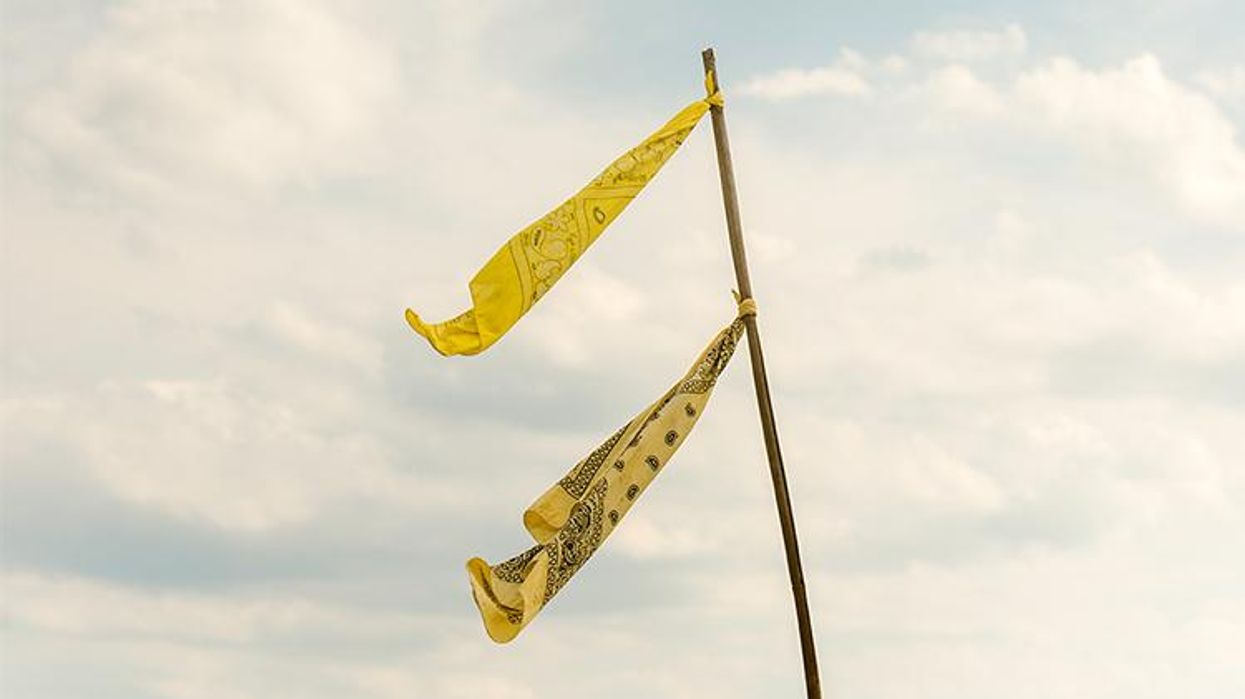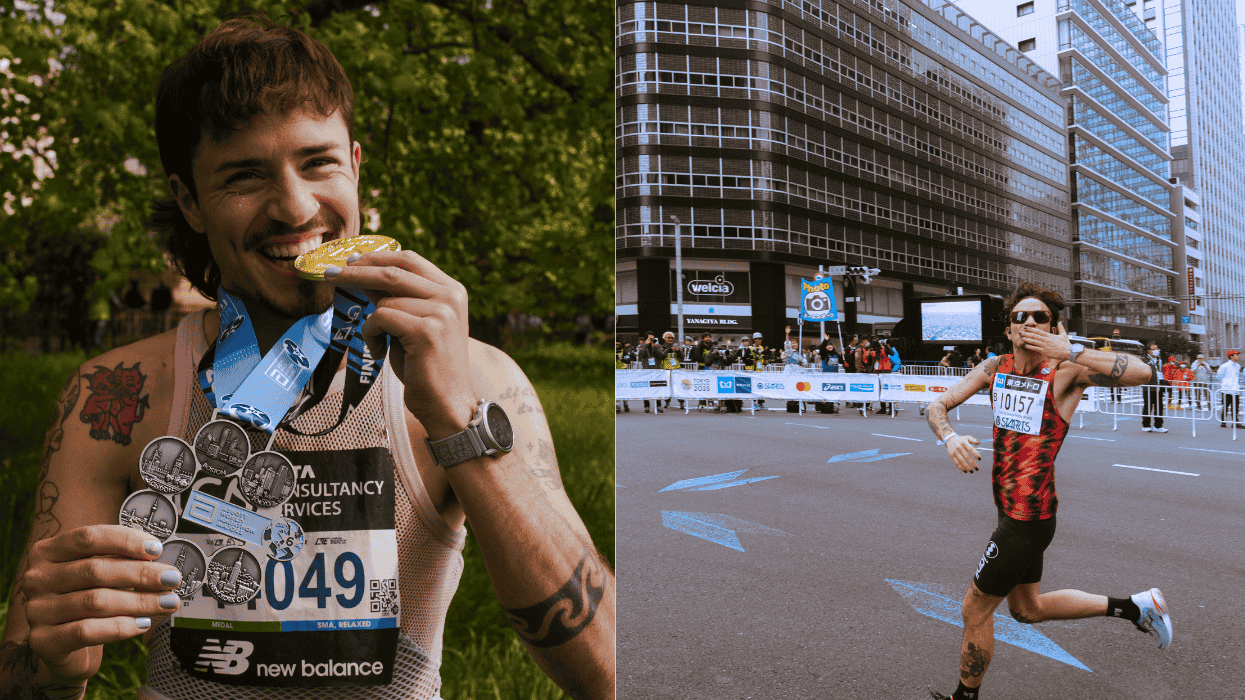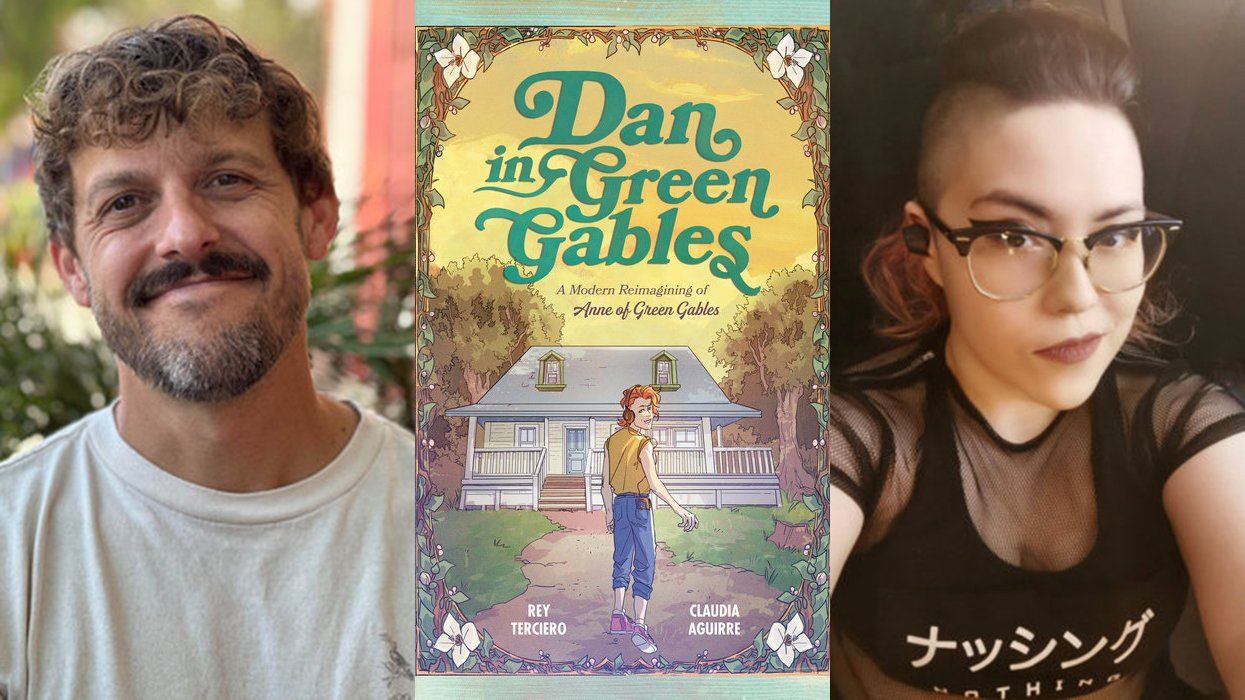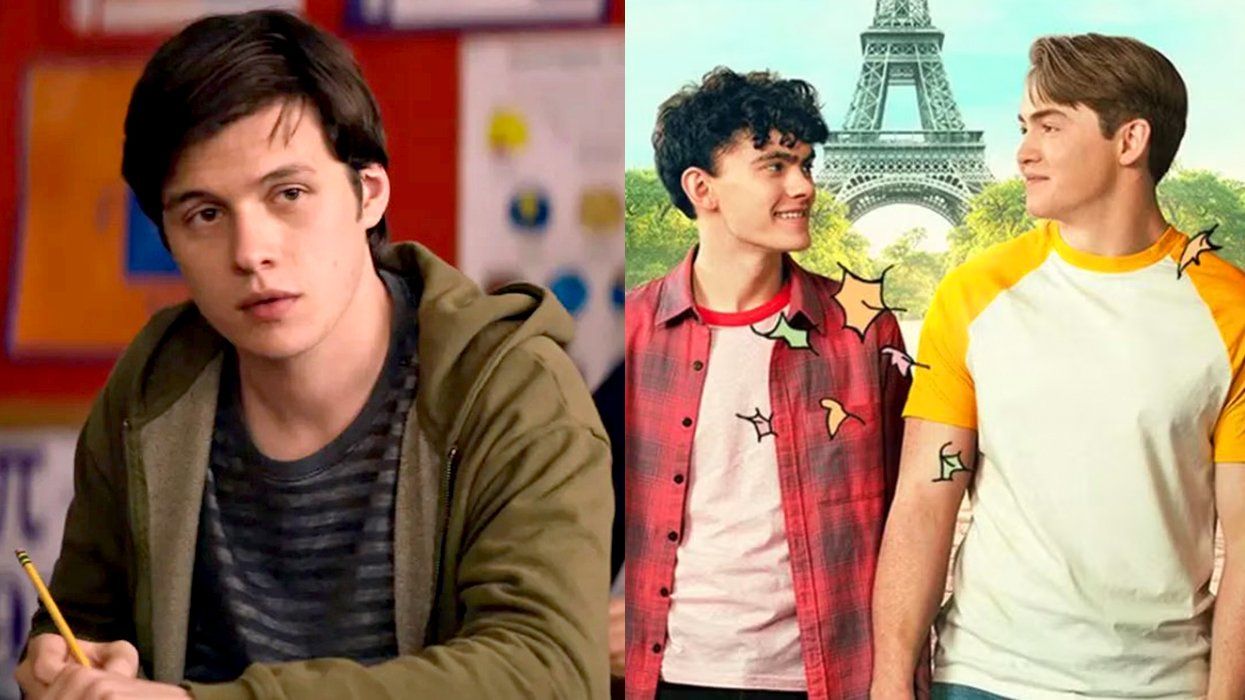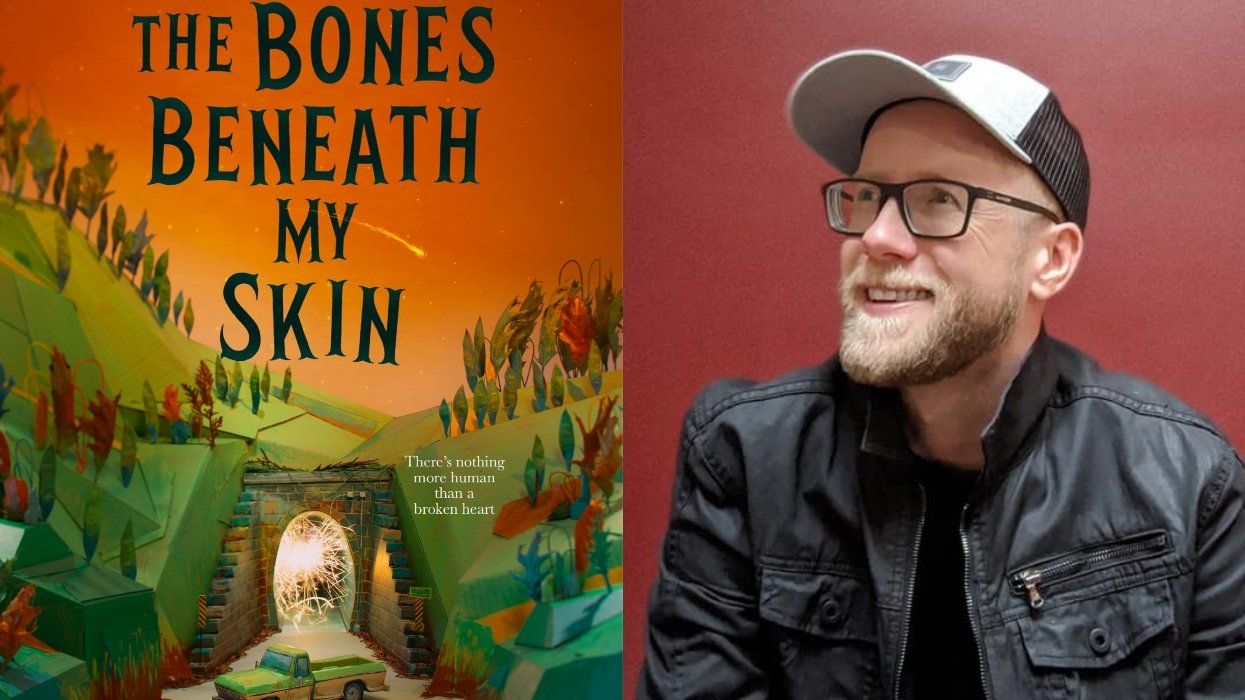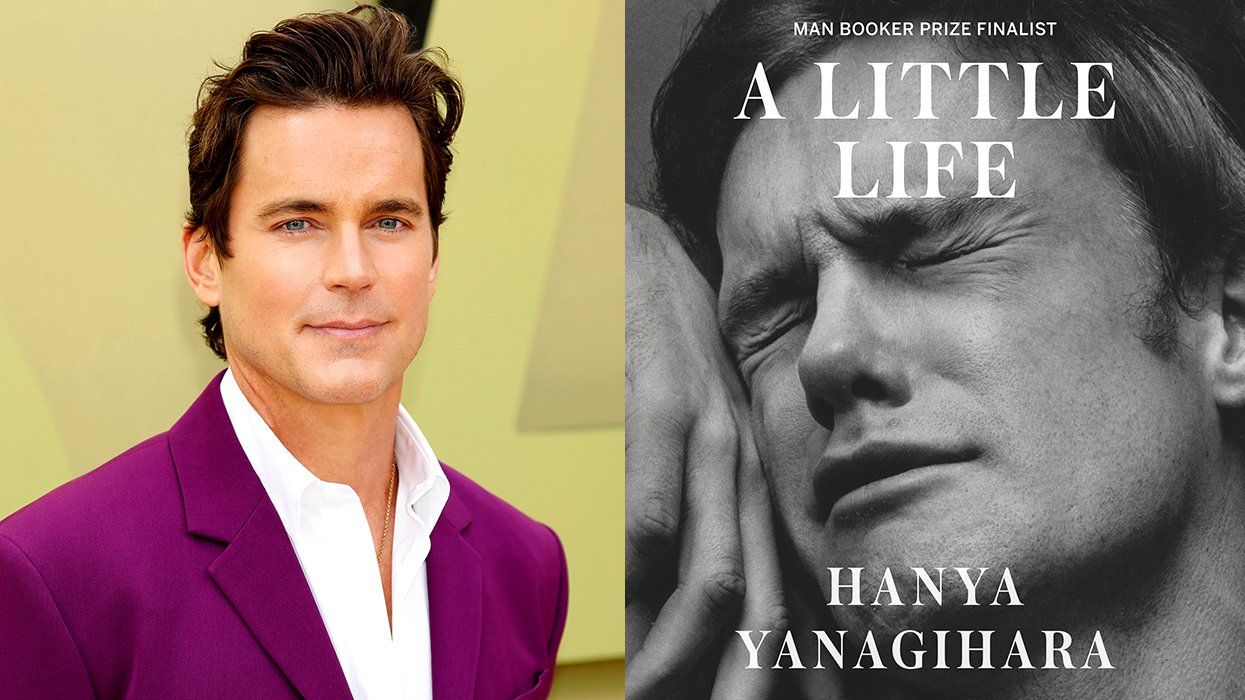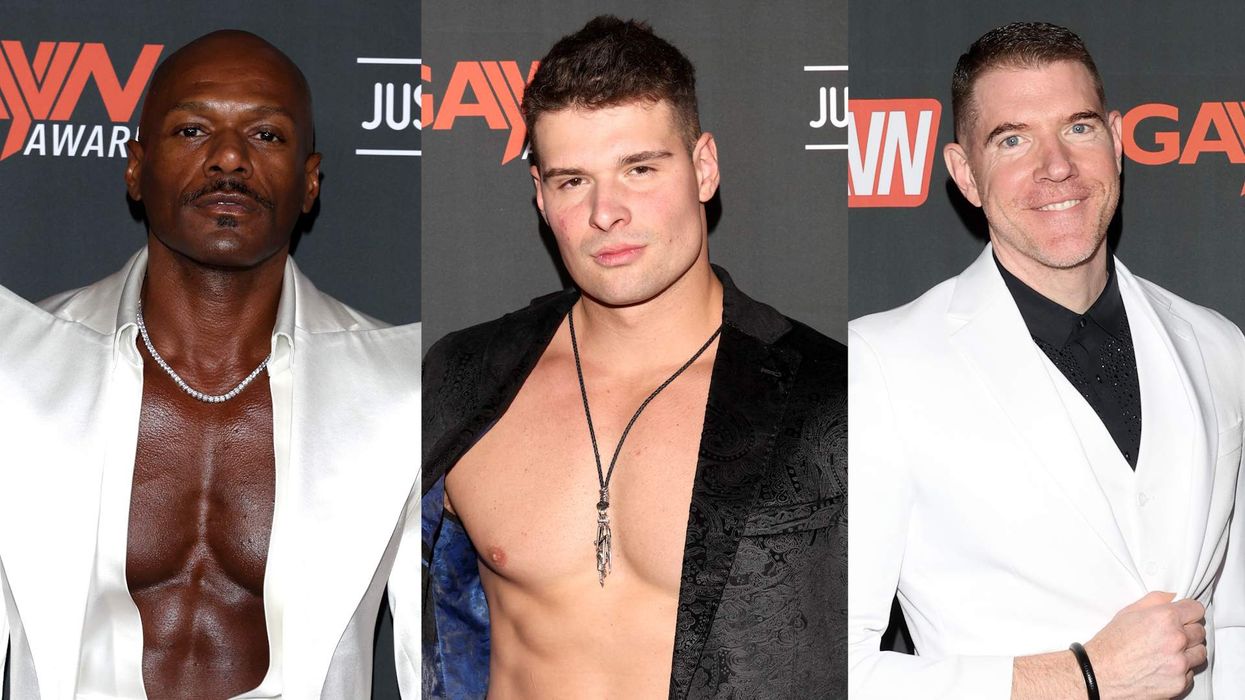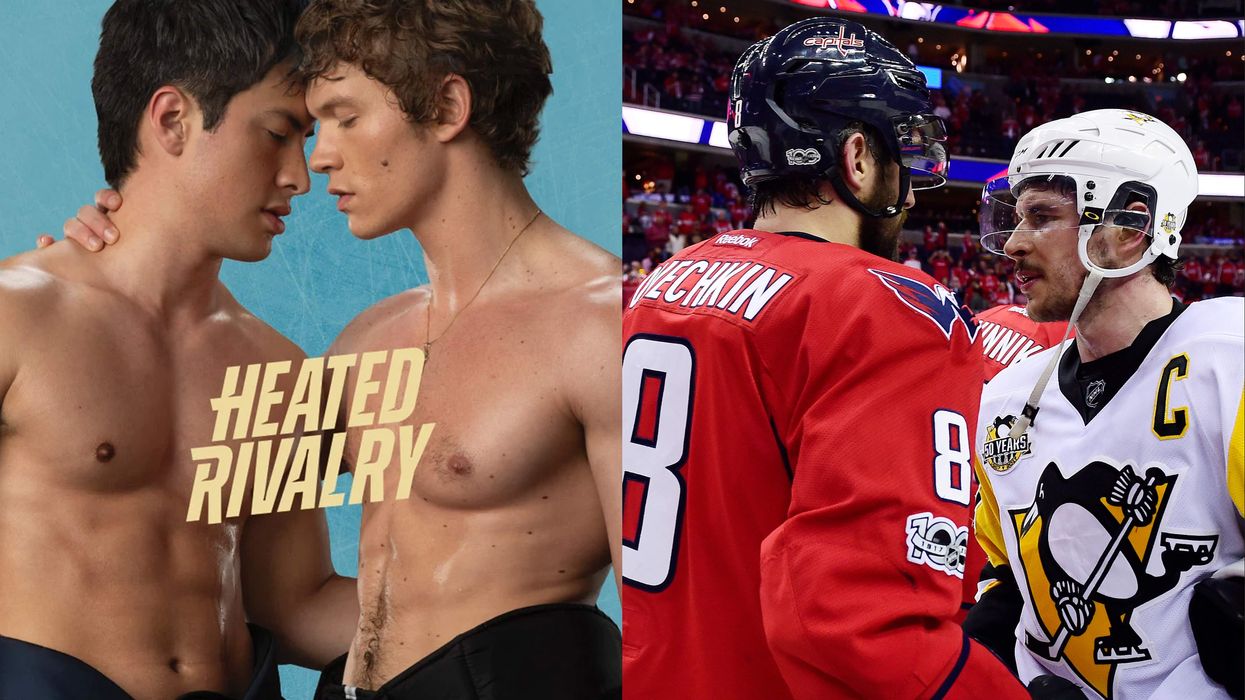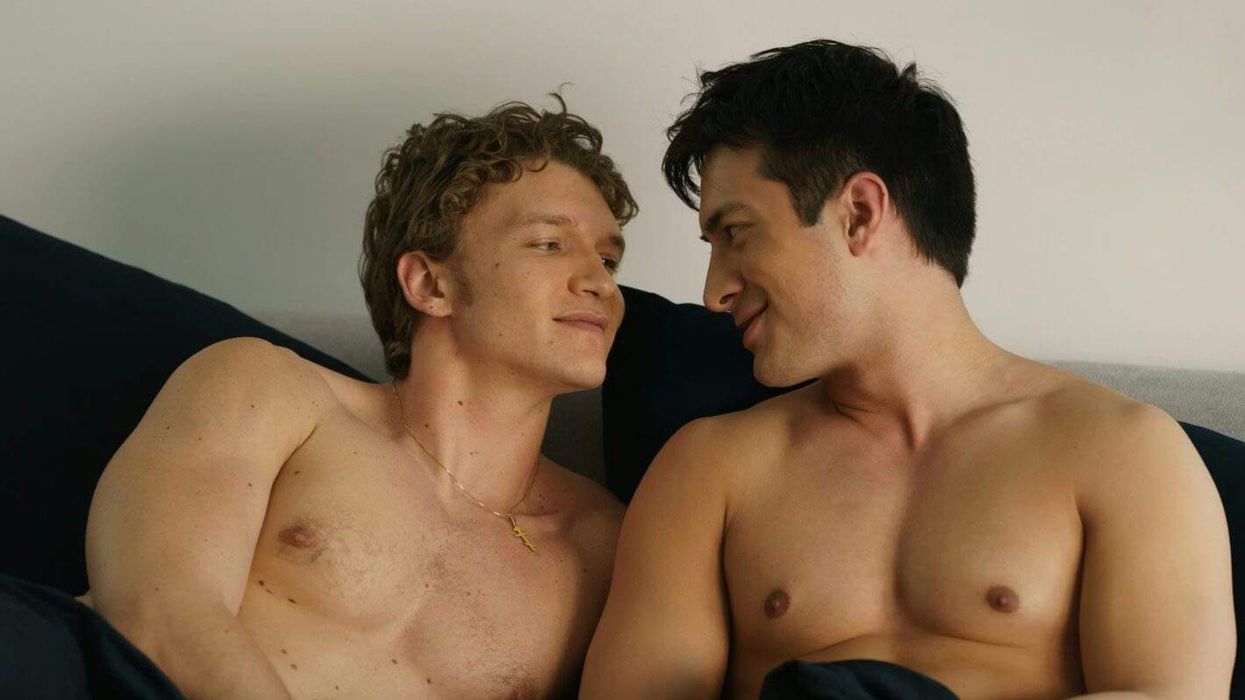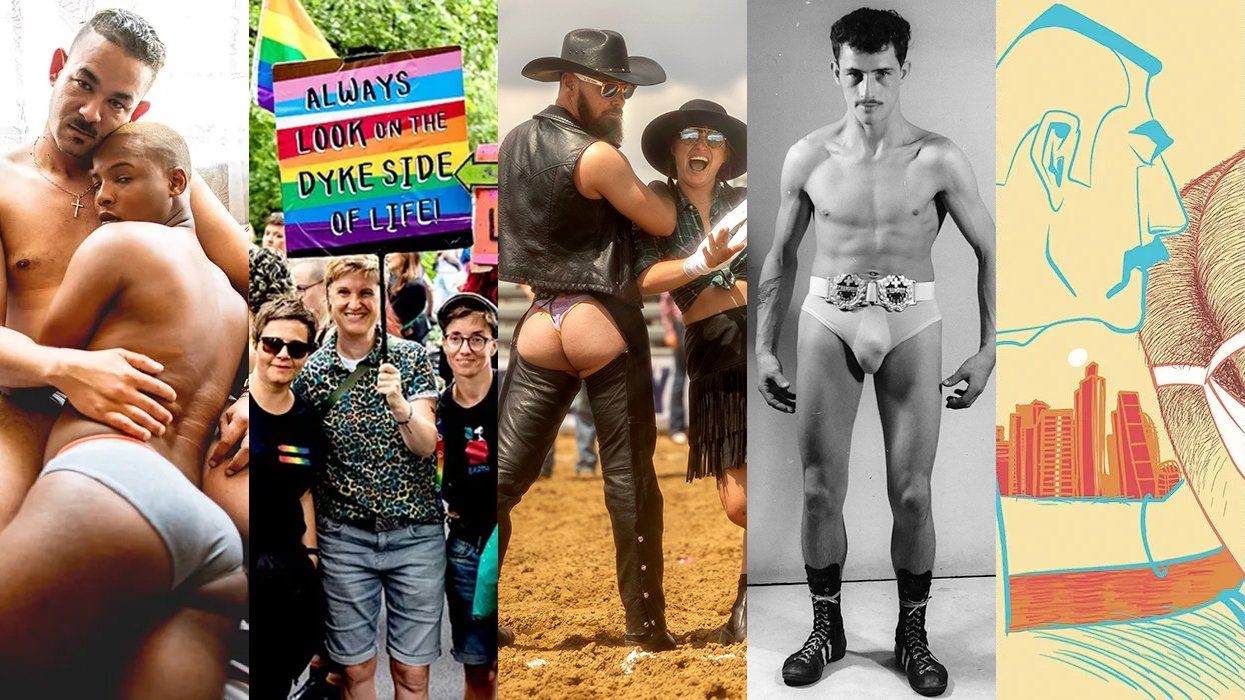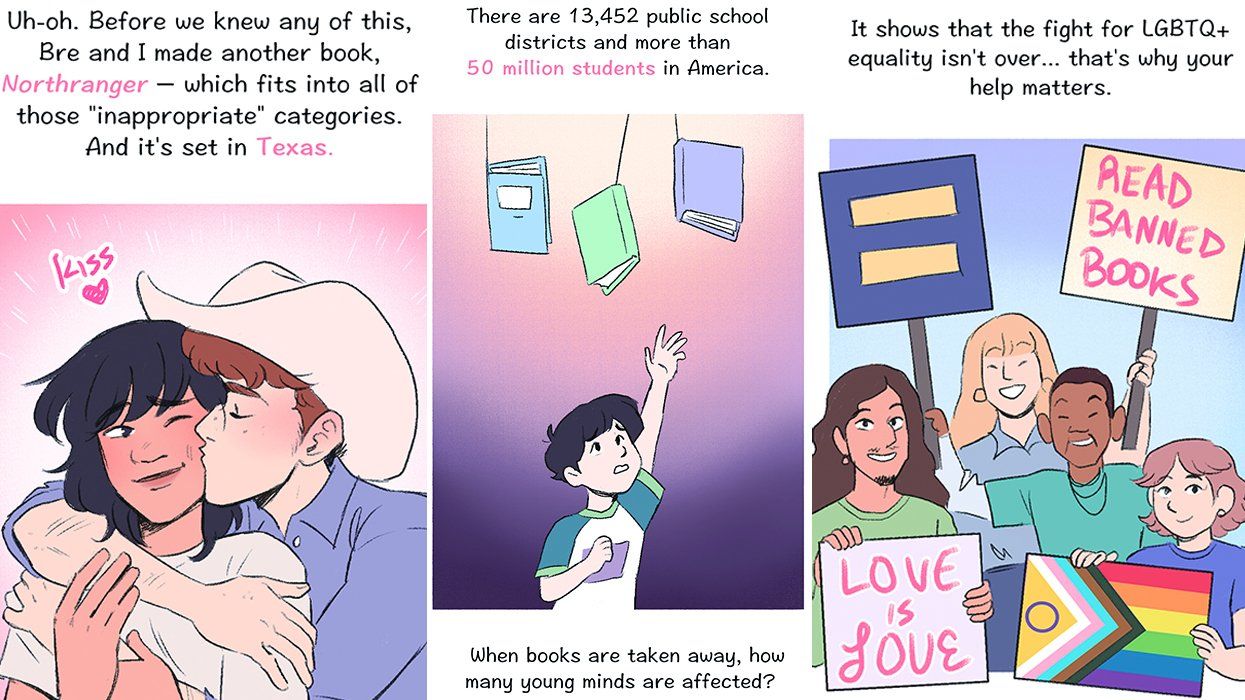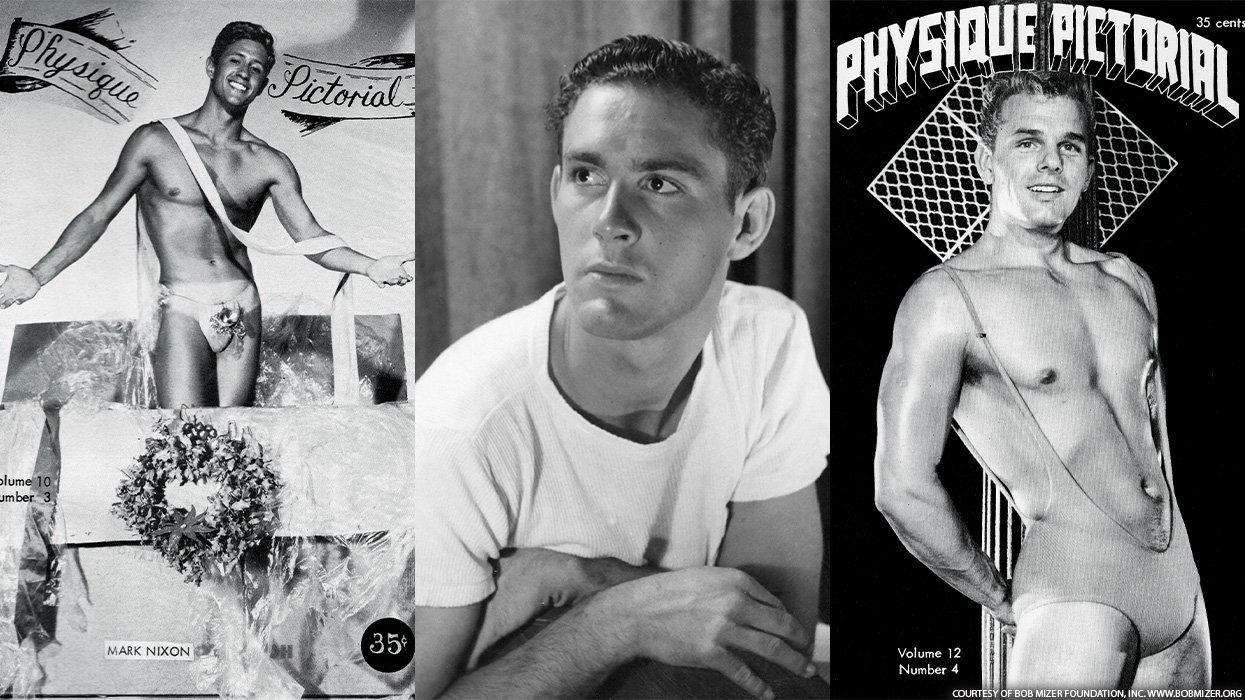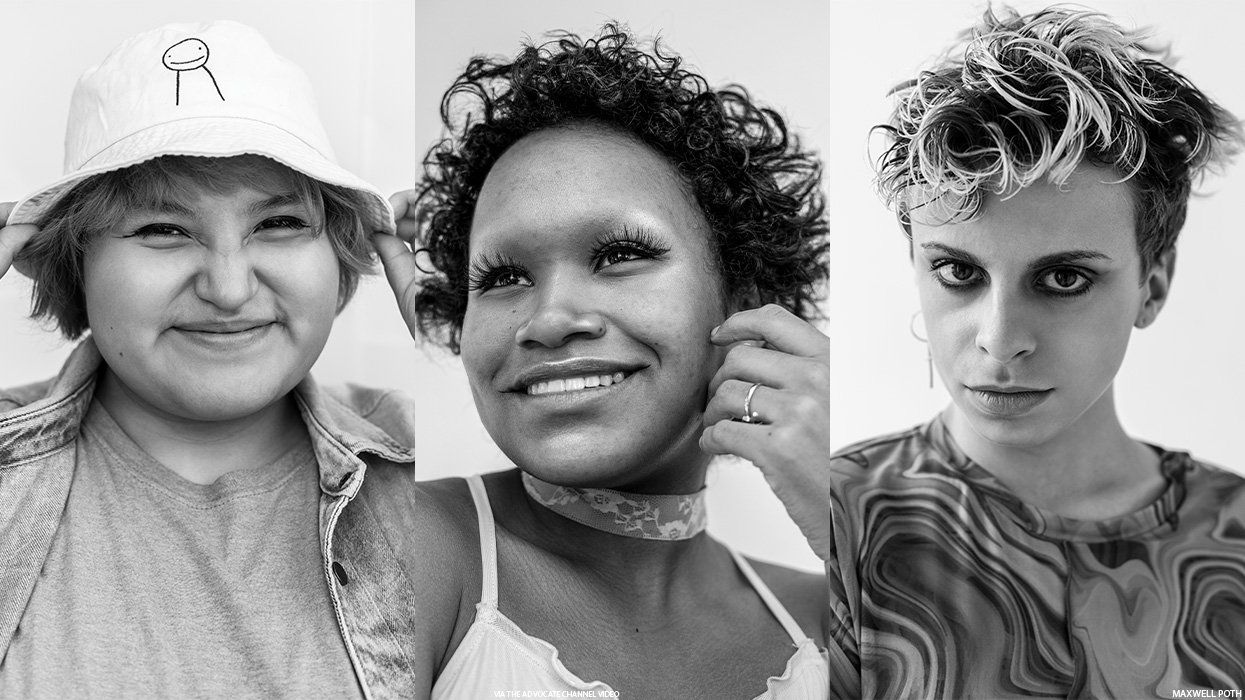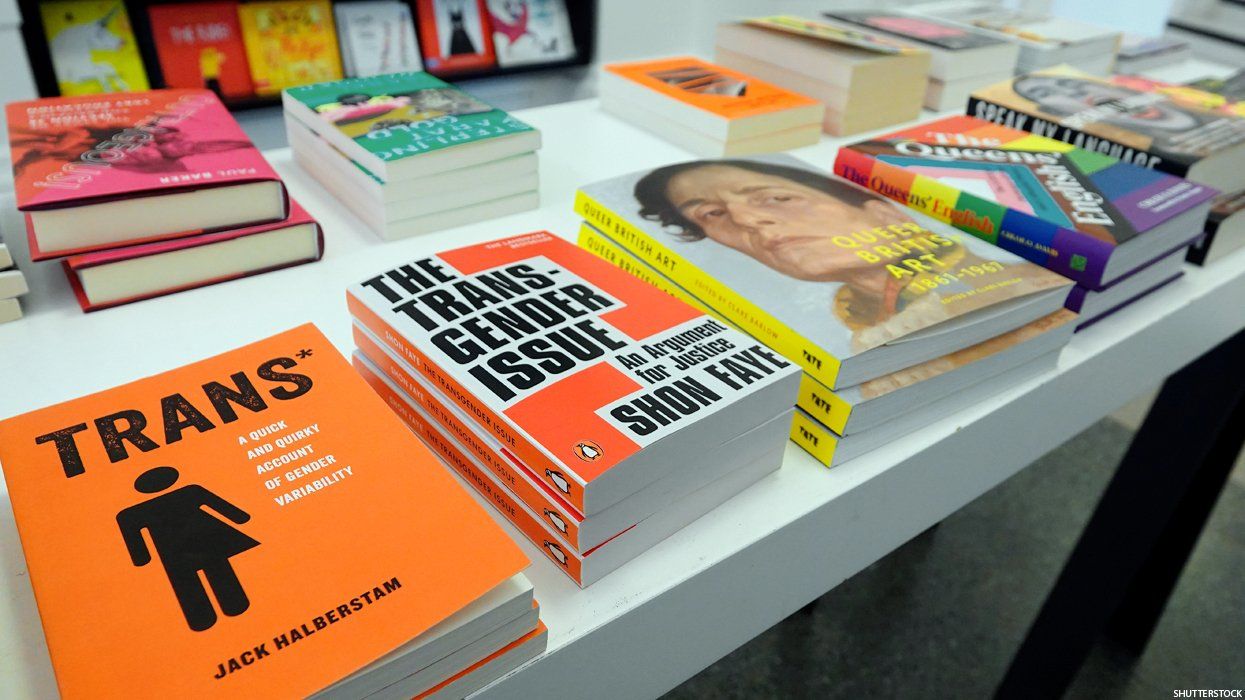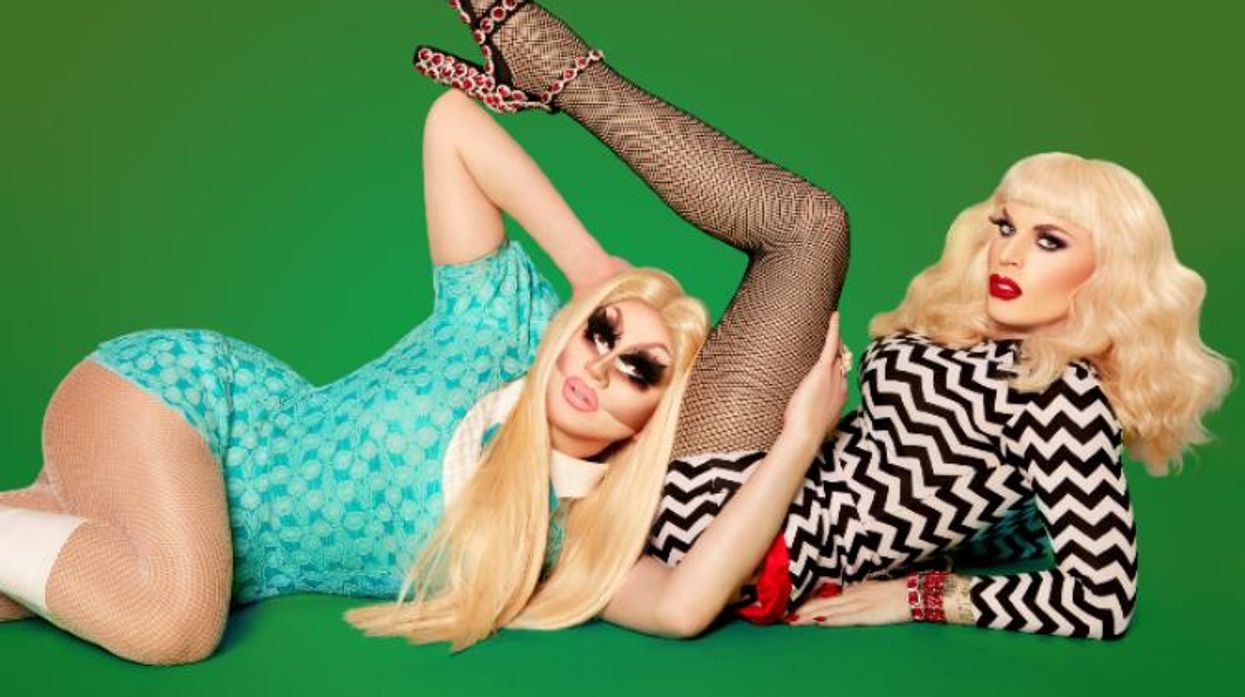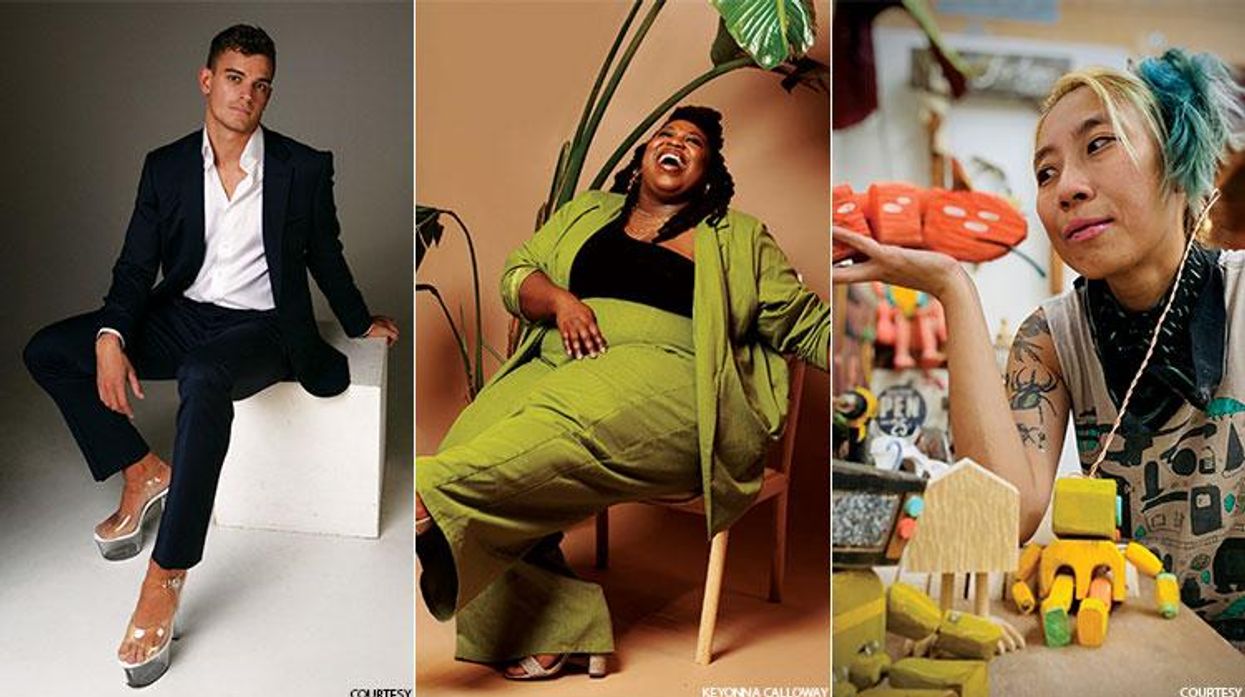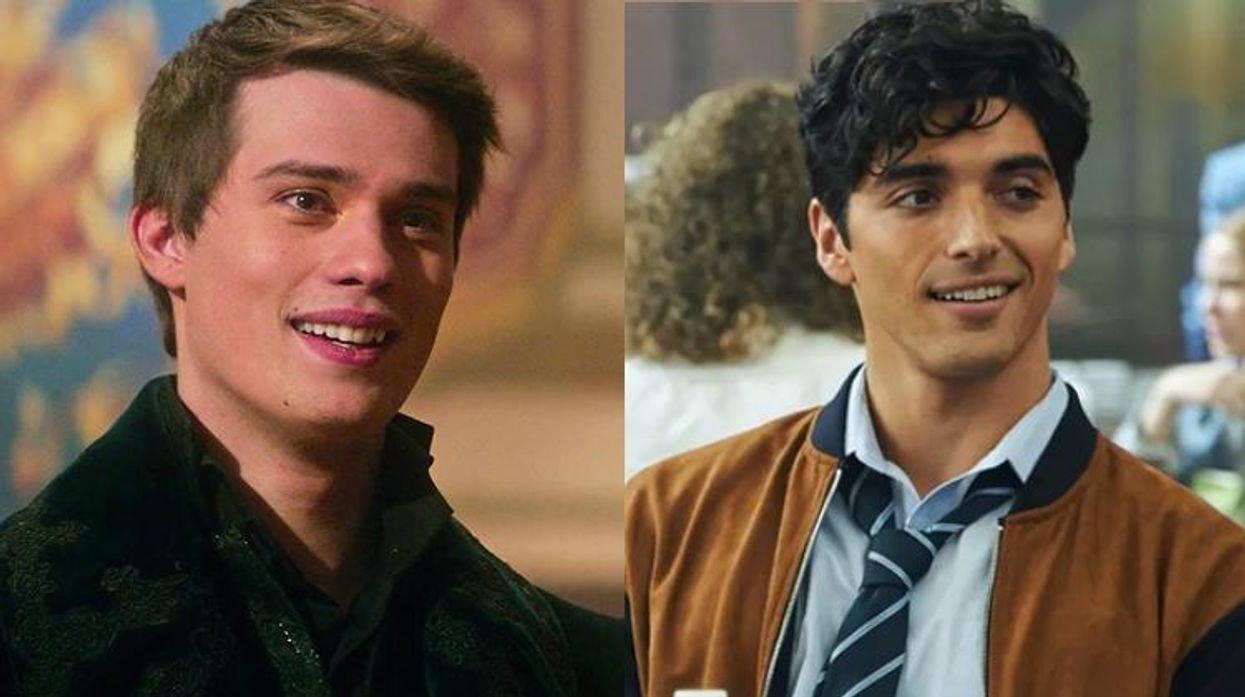What is the texture of desire? What does it smell, taste, feel like? That is the question the artists showcased in Haptic Tactics, the Leslie-Lohman Museum of Gay and Lesbian Art's new exhibition -- opening this weekend -- ask themselves in a show based around the idea of queer materiality. Are certain objects inherently queer, or can they be transformed by queerness in a particularly alchemical way?
One duo of artists, Vincent Tiley and Bryson Rand, teamed up with very specific materials in mind to create The Origin of Color, a project comprised of symbiotic works that seek to investigate minimalism while celebrating a uniquely queer history of pleasure.
OUT: How did you become involved in Haptic Tactics?
Vincent Tiley: The curators approached me awhile ago, before I was in the Fire Island Artist Residency, wanting me to part of a show about queer minimalism and abstraction and I told them about how I was about to go to the residency to try to make paint out of piss that I was collecting at these parties I would throw, and that I would continue to collect on the beach on Fire Island. They thought that project was really exciting, so this project called the Origin of Color is what Bryson and I are presenting in this group show.
Tell me about the works you've created.
Bryson Rand: I have one photograph, Vincent has a painting that's made out of piss and a hanky that he turned into a sculpture that was used as a flag on Fire Island to be like, "here's my piss pot" and the photograph that I've included is a picture of the sand on the beach on Fire Island on one the the last days that we were out there -- I overlapped with Vincent while he was doing the residency. It was this amazing day where the water kept coming up the beach and completely flooded almost the entire beach, so as we were walking back the water had receded and left these beautiful patterns. So that piece alludes to the disappearance of Fire Island, and looking at these remnants and thinking of our project in terms of the history that we're addressing and investigating. It felt like a good pairing of these three, and it's one of the few pieces of mine that could be considered minimal or abstract.
Do you find it challenging to make minimal art?
Rand: Kind of. Most of my photographs focus on people or very identifiable places and spaces. My understanding of abstraction in photography is more to do with is how the nature of the camera or the photograph transforms something that you're familiar with seeing, and it wasn't until Vincent and I started collaborating that I was thinking of minimalism and how that related to my artwork via this collaboration.
How do you make paint out of piss?
Tiley: Well you can't, really, which is the gag. There's this old color called Indian Yellow that was believed to have been made from boiled down cow pee and it's this sexy story that gets told over and over again, but its come under fire as being probably false, so I set out to try and create either that pigment or a different pigment from this piss I was collecting from queer people. It's this dubious history, this mythic history of queer people and how, because of HIV and AIDS and because institutions that create history often don't write about queer people, what we get are often these oral histories and reimaginings of what life was like for these people, to fill in those gaps. So this story of boiling down cow pee to create a dry pigment to turn into paint to sell to English painters in the 1800s is this wild crazy story that I tried to mythbust with this project and kind of failed. I bought dried pee on the internet from someone who was selling it to people who want to pass drug tests, and I bought these different Indian dies that people thought that this pigment was made out of, so I made paint out of a bunch of different things. I made three paintings out of actual human piss.
How many peoples piss do you think you collected?
Tiley: Countless. So many people. We hosted seven parties, and then Charlene [Incarnate] donated her own.
I'm sure she had a lot to give.
Tiley: She was a very generous donor. Bryson has an incredible photograph of that, which won't be in this show, it'll be in our next show at Abrons Art Center.
This show seems to be a lot about the materials of desire and specifically queer desire. How does desire change when its removed from the context of heteronormativity?
Rand: Something I think about a lot in my own work and in my life in general is, as a gay-identified man and as a queer person, we are allowed to do whatever the fuck we want and not worry about these rules or the context of heteronormativity. Vincent working with piss to make these paintings and the desire to achieve them and it being this slippery, nebulous, unattainable thing feels poignant.
It's a lot about context, isn't it? Because if there was some straight dude artist making paintings out of the piss he'd collected from women, we'd see it as very creepy, and when you contextualize it with queerness, we see the end result and the process a lot differently.
Tiley: Well, I hope I'm creeping a lot of people out. But part of the context of this particular project is that piss play as a sexual act became a popular safe alternative during the epidemic years in New York City and part of this project is an interview with a leather daddy named Bruce Michael Gelbert who gives his own personal history of these huge fantastic fabulous stories of these crazy piss parties in people's apartments and in clubs called The Toilet that are no longer existing. Just the sheer head on the nose of gay nightlife spaces is pretty remarkable to me. Queerness and especially queer play is so much about openness, about clear communication, which is the only way you get what you want, so there's a built in infrastructure where this is more about community and sharing and pleasure than it is about a tokenizing of sexual conquest that could be seen in a straight man doing the same project.
Is pleasure, or the pursuit of pleasure, one of the innate tenets of queerness?
Tiley: Absolutely. Some of the highest callings in the writings that inspire me are to keep on living and keep seeking out pleasure. You must survive but you also must purse pleasure, you also must understand what makes life pleasurable for you, what makes life worth living. You must survive but also thrive.
Haptic Tactics opens Saturday, February 17 at the Leslie-Lohman Museum of Gay and Lesbian Art and runs through May 20.


